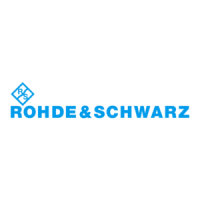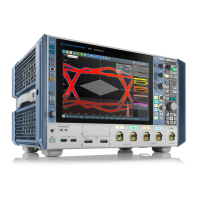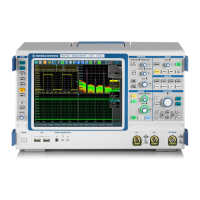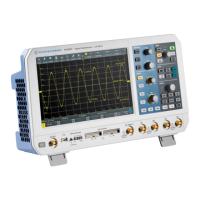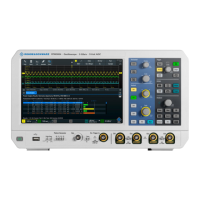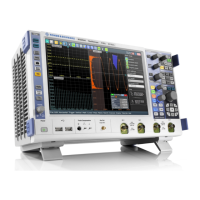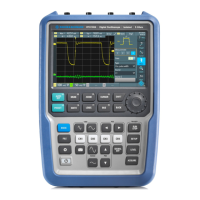Protocol analysis
R&S
®
RTE
691User Manual 1326.1032.02 ─ 20
●
SEARch:RESult:ARINc:WORD<m>:LABel? on page 1646
●
SEARch:RESult:ARINc:WORD<m>:PATTern? on page 1646
●
SEARch:RESult:ARINc:WORD<m>:SDI? on page 1647
●
SEARch:RESult:ARINc:WORD<m>:SSM? on page 1646
●
SEARch:RESult:ARINc:WORD<m>:STARt? on page 1648
●
SEARch:RESult:ARINc:WORD<m>:STATe? on page 1648
●
SEARch:RESult:ARINc:WORD<m>:STOP? on page 1647
●
SEARch:RESult:ARINc:WORD<m>:SYMBol? on page 1647
13.11 Ethernet 10BASE-T and 100BASE-TX (option
R&S RTE-K8)
Twisted-pair Ethernet technologies are based on the family of standards IEEE 802.3,
issued by the Institute of Electrical and Electronics Engineers (IEEE).
R&S RTE-K8 is a firmware option that enables the R&S RTE to analyze Ethernet pro-
tocol variants 10BASE-T and 100BASE-TX, by decoding the signal and searching
within the decoded events. It is possible to trigger on 10BASE-T signals and 100BASE-
TX signals. The option is compatible with the standards IEEE 802.3i of 1990 (10BASE-
T) and IEEE 802.3u of 1995 (100BASE-TX).
● The Ethernet protocol............................................................................................691
● Ethernet configuration...........................................................................................692
● Ethernet trigger..................................................................................................... 697
● Ethernet label list...................................................................................................703
● Ethernet decode results........................................................................................ 704
● Search on decoded Ethernet data........................................................................ 707
13.11.1 The Ethernet protocol
The two Ethernet protocol variants that R&S RTE-K8 can process have the following
features:
●
10BASE-T uses Manchester coding (or phase encoding, PE). In terms of a logical
Boolean operation, the Manchester value of each bit is the exclusive disjunction
(XOR) of the original data value and the clock value. A "0" is expressed by a high-
to-low transition, a "1" by a low-to-high transition. These transitions, which occur at
the middle of each bit period, make the signal self-clocked.
●
100BASE-TX uses a 4B5B multi-level transmit (MLT-3) encoding. The protocol
sequentially cycles through a sequence of the voltage levels -1 V, 0 V, +1 V, and
0 V. To transmit a "1" bit, MLT-3 moves to the next state; to transmit a "0" bit, it
stays in the same state. 4B5B block coding is used to map groups of four bits onto
groups of five bits. Also, the signal is scrambled.
Ethernet 10BASE-T and 100BASE-TX (option R&S
RTE-K8)
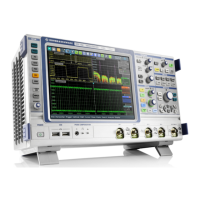
